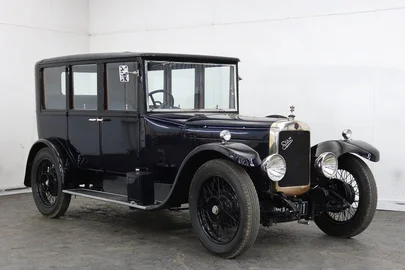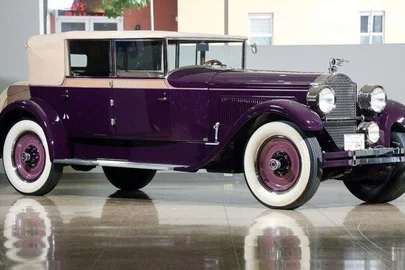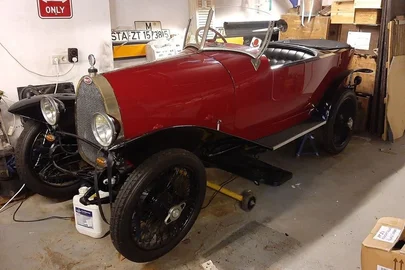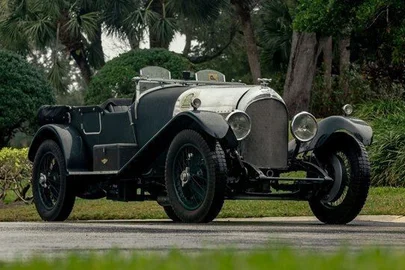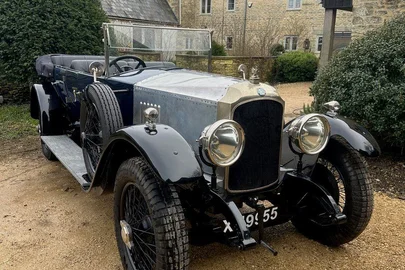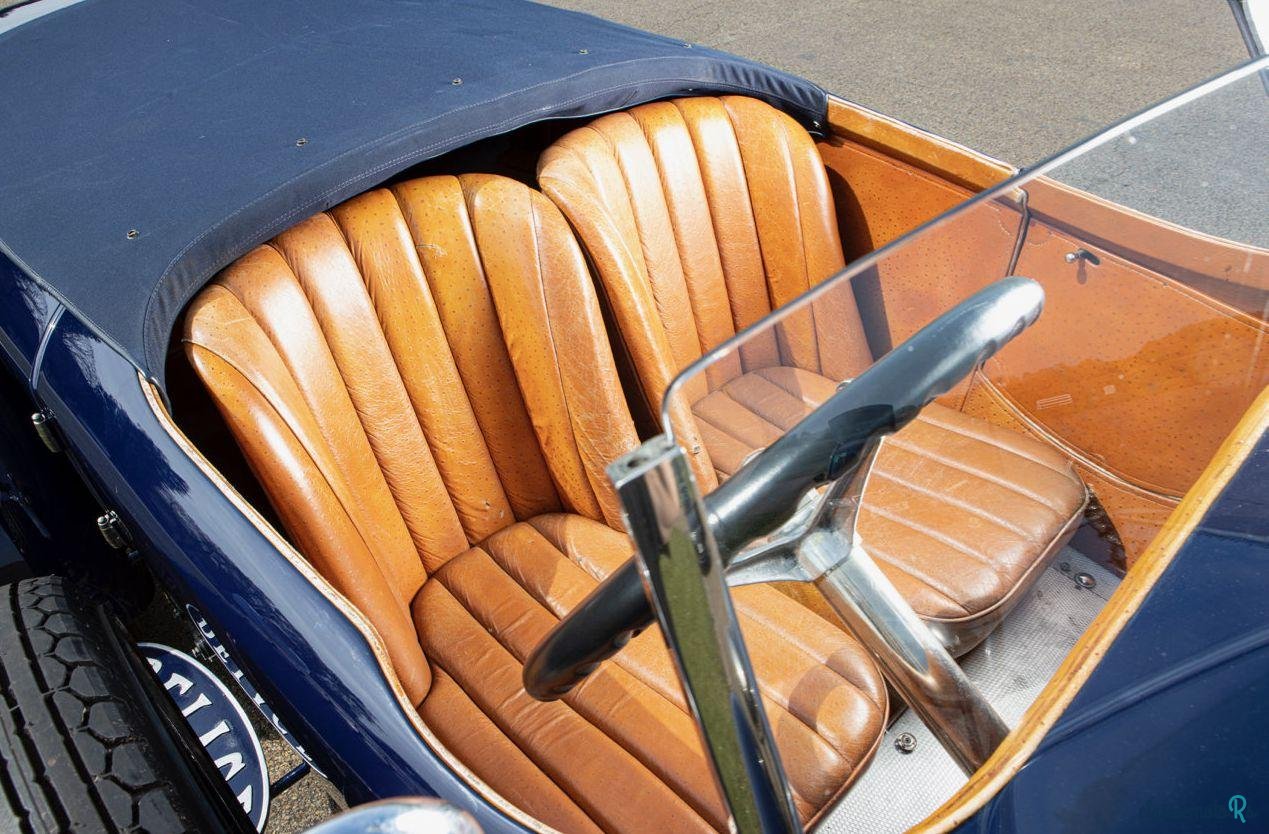
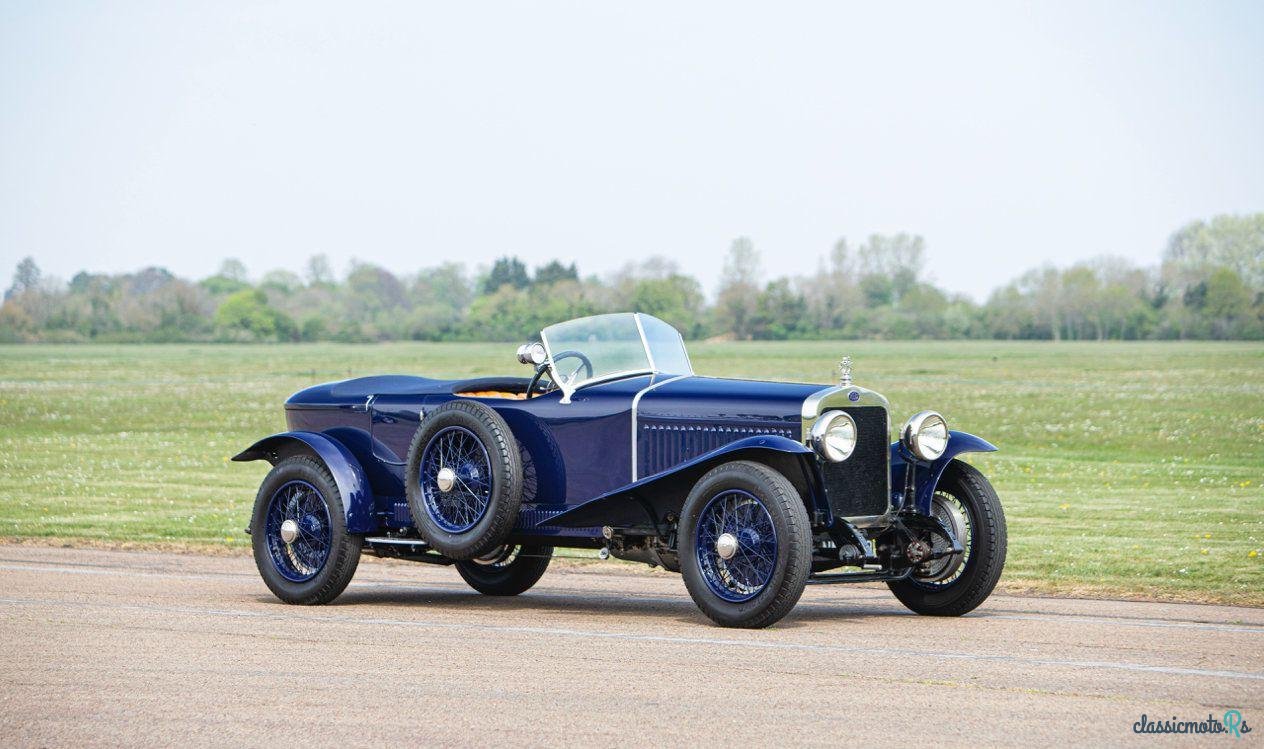

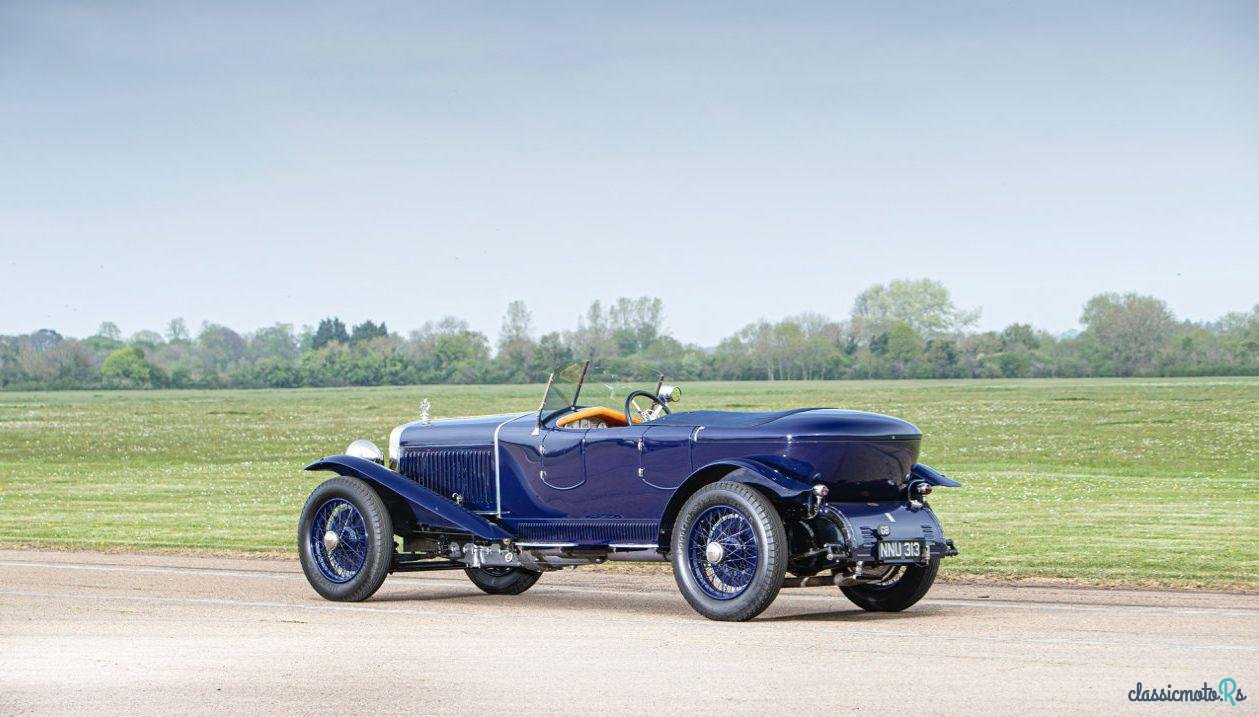
4 photos
1922' Delage Co2
Signaler cette annonce!Évaluer!Ajouter aux favoris
NégociablePublié 27 Avril 2020ID: AxbUiL
Périmée
il y a 4 années, 11 mois
il y a 4 années, 11 mois
Information from the owner
Corps: Coupés Sportives
Âge: 98 années
Commentaires du vendeur sur 1922' Delage Co2
One of only a handful of examples known to have survived worldwide
1922 Delage CO2 4½-Litre Six-Cylinder OHV Dual Cowl Tourer
Chassis No. 12868
Engine No. 163
Registration No. NNU 313
‘The OHV CO2 is a splendid, heroic vehicle; the public, as is so often the case, were wrong…’ William Stobbs, Les Grandes Routières – France’s Classic Grand Tourers.
In terms of engineering prowess, technological advancement and outright good looks, few, if any, touring cars of the early vintage period can compare with the CO2 Delage. Delage had consistently proved themselves in competition throughout the Edwardian period and continued to produce some of the most exciting and successful Grand Prix cars well into the 20s – the V12 and straight-eight supercharged Grand Prix cars being some of the most desirable and successful of the period.
The CO2 has an impressive power output generated by a lusty 4.5-Litre Straight-Six overhead-valve engine with a cross-flow cylinder head and transmitted to the rear wheels via a four-speed gearbox. With a sturdy and stiff chassis design for the period (no sub-frame) and excellent four-wheel braking system, it was one of the most beautifully engineered and technologically advanced cars of the era.
Sadly the CO2 fell somewhat foul of a slight marketing blunder by Delage. The preceding CO model was powered by a side-valve engine and, whilst blessed with Delage’s usual high standard of build quality, was rather ponderous and thus proved unpopular with the buying public. When the CO2 was launched it might have been better to have come up with a different nomenclature for the cars such that the stigma of the ‘CO’ was not attached. One wonders what might have been had Delage taken this route. As a result of this marketing faux pas the CO2 was not as popular and it should have been and it is thought that only circa 280 (including Grand Sport models) were produced. With hindsight it can only be seen as a crying shame for the vintage enthusiast that not more of these exquisite machines were made.
Only a handful of Delage CO2s are known to have survived worldwide which is perhaps unsurprising given the low production numbers. Another reason for the low survival rate was the high aluminium content of the cars which unfortunately meant that a large number of European based examples were scrapped during the Second World War to cater for the demands of military aircraft production. Some CO2s were sold new in Australia through agents Joubert & Joubert and, without a war being waged on the doorstep, a few survived intact. On 15th February 1923, a CO2 broke the Melbourne to Sydney record with a time of 13 hours and 47 minutes, impressive when that same journey still takes at least nine hours on tarmac roads! Latterly Owen Platt Hepworth competed with a CO2 in the Vintage Sports Car Club of Australia speed events and regularly ruffled the feathers of the Vauxhall and Bentley owners.
The early history of this fine CO2 is not known. Tragically factory records of the CO2 were destroyed, along with many of the cars, during WWII. The previous owner purchased this Delage, along with one other in the western district of Victoria, Australia. Both cars were dismantled but largely mechanically complete including radiators and bulkheads, but no coachwork was present. A spare chassis was also purchased which was later used for an Aero-engined special. The previous owner is a leading authority on Delage and, at the time of restoring this CO2, owned and managed one of Australia’s foremost restoration company’s – namely The Delage Garage.
The Delage Garage restored the example offered for sale here, Chassis No. 12868, between 2009 and 2012. Mechanical work was carried out in house under the watchful eye of the owner, with Ken Styles, a former tool maker and meticulous engineer responsible for machining and assembly. In the absence of any original coachwork respected coachbuilder Richard Stanley constructed a torpedo body similar in style to those offered for the Delage chassis in period. Upholstery of the dual-cowl coachwork was entrusted to Blackmans and Melbourne and is finished in ostrich hide rather than traditional leather.
In 2014 the Delage was imported to the UK and subsequently purchased by the current owner. Since purchasing the CO2 he and his wife have enjoyed a number of events with the car, both in the UK and on Malta where they also have residence. The first event in which the Delage was entered after purchase was The Royal Concours held at Holyrood Palace, Edinburgh in 2015, where the car completed the pre-concours tour and was very well received at the event. A copy of the event book containing the entry for the Delage is offered as part of the file with the car.
After the Royal Concours, and due to a period of the engine running rich, a piston picked up as a result of the build-up of carbon this caused. Luckily the issue was diagnosed extremely quickly and thus there was practically no damage caused aside from a gentle scoring of one cylinder bore. All of the repair work was entrusted, Barry Owen, a talented and experienced vintage motor engineer, who at the time was based in Malta. While in his care, the engine of the CO2 was dismantled, de-coked, the cylinder bore re-honed and new piston rings and cylinder head gasket sourced. The engine was then carefully re-assembled and tuned to perfection, with the balance of the triple Solex carburettors carefully set up. Barry Owen commented that he was extremely impressed with the quality of the work that had been carried out on the engine internals in Australia. All subsequent work has been entrusted to Barry Owen, who in recent years has moved his workshops from Malta back home to Anglesey. Further works have included an overhaul of the charging system to ensure that it works perfectly. Recently the two sets of high tension leads have been replaced - a tricky task that requires a great deal of patience to carefully feed the leads through the beautifully designed nickel-plated ignition tubes that carry the leads around the engine.
On a recent test drive the Delage performed faultlessly and, your author, who has had the pleasure of driving the Delage both in Australia and England can report that the car is going better than ever, testament to the quality of the fettling works carried out by Barry Owen.
As well as the aforementioned Royal Concours, this fine Delage has also been a feature car at the Borders Vintage Automobile Club’ annual Classic Festival at Thirlestane Castle, one of Scotland’s largest vintage car events. Furthermore, it has picked up a number prizes at the concours d’elegance held for the Mdina Grand Prix on Malta. Sold only due to the current owner’s desire for a slightly more “modern” 1930s touring motorcar, this magnificent and fast vintage sports-tourer is an excellent candidate for long distance rallies and tours, being both comfortable and effortlessly fast from low revs.
The Late. Bill Boddy perhaps sums the CO2 up best when, in signing off on an article about the CO Delages in MotorSport of August 1997 (copy on file) he states: “So, among the great cars of the past, let us not forget this masterpiece of Monsieur Delage.” Here here!
1922 Delage CO2 4½-Litre Six-Cylinder OHV Dual Cowl Tourer
Chassis No. 12868
Engine No. 163
Registration No. NNU 313
‘The OHV CO2 is a splendid, heroic vehicle; the public, as is so often the case, were wrong…’ William Stobbs, Les Grandes Routières – France’s Classic Grand Tourers.
In terms of engineering prowess, technological advancement and outright good looks, few, if any, touring cars of the early vintage period can compare with the CO2 Delage. Delage had consistently proved themselves in competition throughout the Edwardian period and continued to produce some of the most exciting and successful Grand Prix cars well into the 20s – the V12 and straight-eight supercharged Grand Prix cars being some of the most desirable and successful of the period.
The CO2 has an impressive power output generated by a lusty 4.5-Litre Straight-Six overhead-valve engine with a cross-flow cylinder head and transmitted to the rear wheels via a four-speed gearbox. With a sturdy and stiff chassis design for the period (no sub-frame) and excellent four-wheel braking system, it was one of the most beautifully engineered and technologically advanced cars of the era.
Sadly the CO2 fell somewhat foul of a slight marketing blunder by Delage. The preceding CO model was powered by a side-valve engine and, whilst blessed with Delage’s usual high standard of build quality, was rather ponderous and thus proved unpopular with the buying public. When the CO2 was launched it might have been better to have come up with a different nomenclature for the cars such that the stigma of the ‘CO’ was not attached. One wonders what might have been had Delage taken this route. As a result of this marketing faux pas the CO2 was not as popular and it should have been and it is thought that only circa 280 (including Grand Sport models) were produced. With hindsight it can only be seen as a crying shame for the vintage enthusiast that not more of these exquisite machines were made.
Only a handful of Delage CO2s are known to have survived worldwide which is perhaps unsurprising given the low production numbers. Another reason for the low survival rate was the high aluminium content of the cars which unfortunately meant that a large number of European based examples were scrapped during the Second World War to cater for the demands of military aircraft production. Some CO2s were sold new in Australia through agents Joubert & Joubert and, without a war being waged on the doorstep, a few survived intact. On 15th February 1923, a CO2 broke the Melbourne to Sydney record with a time of 13 hours and 47 minutes, impressive when that same journey still takes at least nine hours on tarmac roads! Latterly Owen Platt Hepworth competed with a CO2 in the Vintage Sports Car Club of Australia speed events and regularly ruffled the feathers of the Vauxhall and Bentley owners.
The early history of this fine CO2 is not known. Tragically factory records of the CO2 were destroyed, along with many of the cars, during WWII. The previous owner purchased this Delage, along with one other in the western district of Victoria, Australia. Both cars were dismantled but largely mechanically complete including radiators and bulkheads, but no coachwork was present. A spare chassis was also purchased which was later used for an Aero-engined special. The previous owner is a leading authority on Delage and, at the time of restoring this CO2, owned and managed one of Australia’s foremost restoration company’s – namely The Delage Garage.
The Delage Garage restored the example offered for sale here, Chassis No. 12868, between 2009 and 2012. Mechanical work was carried out in house under the watchful eye of the owner, with Ken Styles, a former tool maker and meticulous engineer responsible for machining and assembly. In the absence of any original coachwork respected coachbuilder Richard Stanley constructed a torpedo body similar in style to those offered for the Delage chassis in period. Upholstery of the dual-cowl coachwork was entrusted to Blackmans and Melbourne and is finished in ostrich hide rather than traditional leather.
In 2014 the Delage was imported to the UK and subsequently purchased by the current owner. Since purchasing the CO2 he and his wife have enjoyed a number of events with the car, both in the UK and on Malta where they also have residence. The first event in which the Delage was entered after purchase was The Royal Concours held at Holyrood Palace, Edinburgh in 2015, where the car completed the pre-concours tour and was very well received at the event. A copy of the event book containing the entry for the Delage is offered as part of the file with the car.
After the Royal Concours, and due to a period of the engine running rich, a piston picked up as a result of the build-up of carbon this caused. Luckily the issue was diagnosed extremely quickly and thus there was practically no damage caused aside from a gentle scoring of one cylinder bore. All of the repair work was entrusted, Barry Owen, a talented and experienced vintage motor engineer, who at the time was based in Malta. While in his care, the engine of the CO2 was dismantled, de-coked, the cylinder bore re-honed and new piston rings and cylinder head gasket sourced. The engine was then carefully re-assembled and tuned to perfection, with the balance of the triple Solex carburettors carefully set up. Barry Owen commented that he was extremely impressed with the quality of the work that had been carried out on the engine internals in Australia. All subsequent work has been entrusted to Barry Owen, who in recent years has moved his workshops from Malta back home to Anglesey. Further works have included an overhaul of the charging system to ensure that it works perfectly. Recently the two sets of high tension leads have been replaced - a tricky task that requires a great deal of patience to carefully feed the leads through the beautifully designed nickel-plated ignition tubes that carry the leads around the engine.
On a recent test drive the Delage performed faultlessly and, your author, who has had the pleasure of driving the Delage both in Australia and England can report that the car is going better than ever, testament to the quality of the fettling works carried out by Barry Owen.
As well as the aforementioned Royal Concours, this fine Delage has also been a feature car at the Borders Vintage Automobile Club’ annual Classic Festival at Thirlestane Castle, one of Scotland’s largest vintage car events. Furthermore, it has picked up a number prizes at the concours d’elegance held for the Mdina Grand Prix on Malta. Sold only due to the current owner’s desire for a slightly more “modern” 1930s touring motorcar, this magnificent and fast vintage sports-tourer is an excellent candidate for long distance rallies and tours, being both comfortable and effortlessly fast from low revs.
The Late. Bill Boddy perhaps sums the CO2 up best when, in signing off on an article about the CO Delages in MotorSport of August 1997 (copy on file) he states: “So, among the great cars of the past, let us not forget this masterpiece of Monsieur Delage.” Here here!
